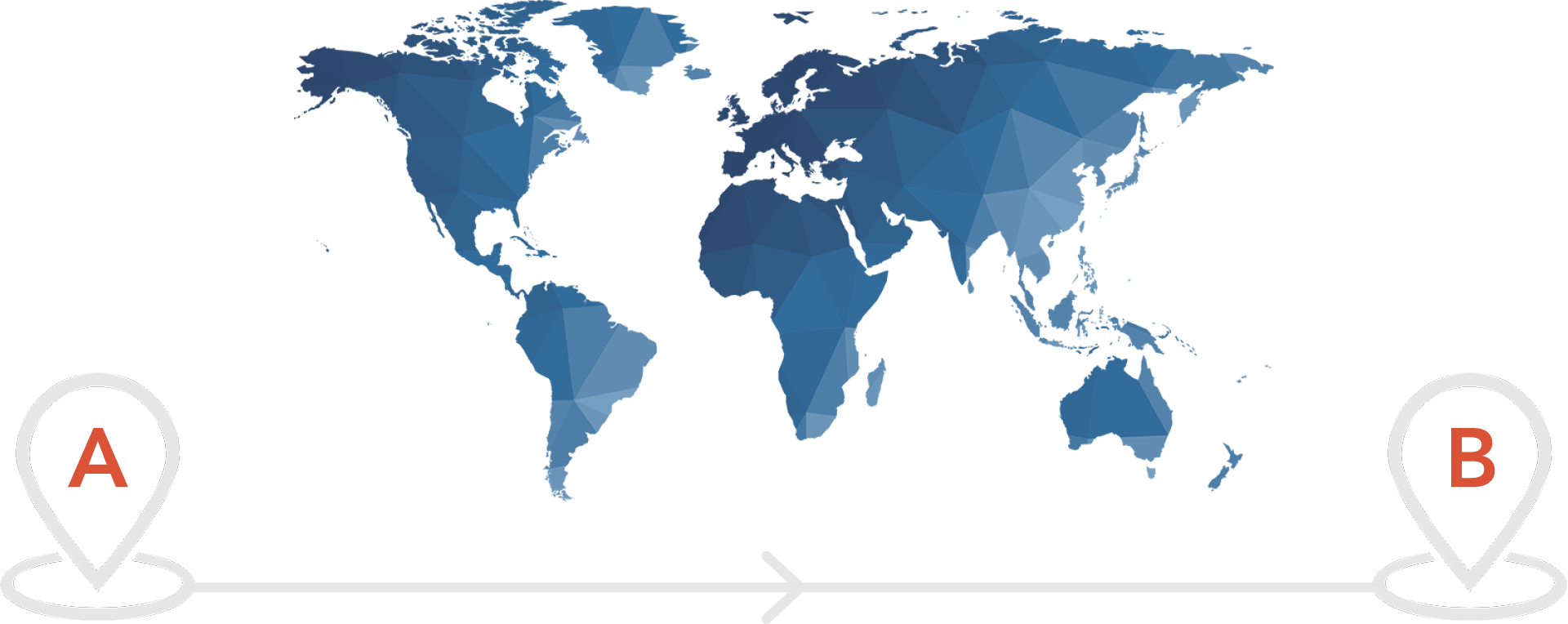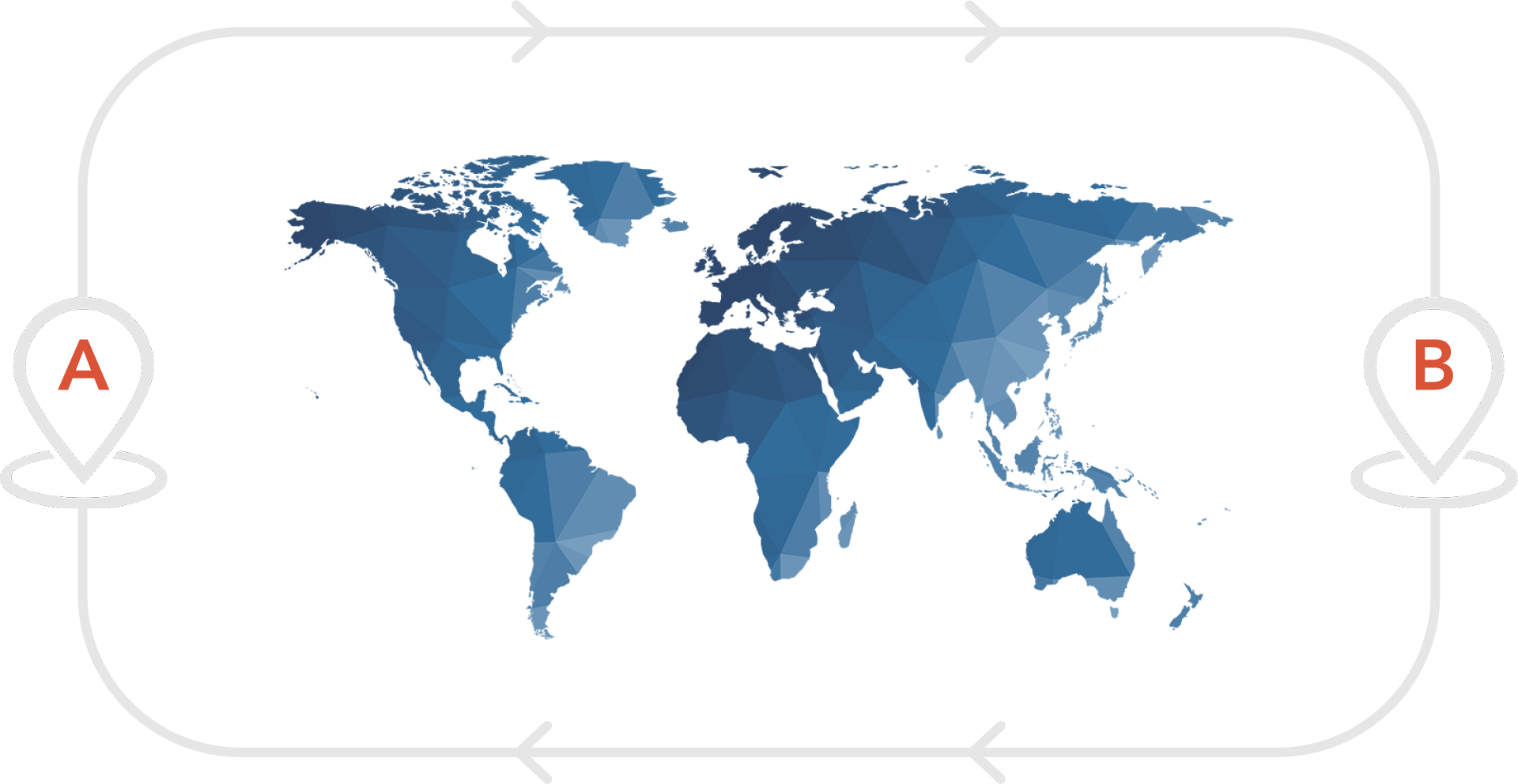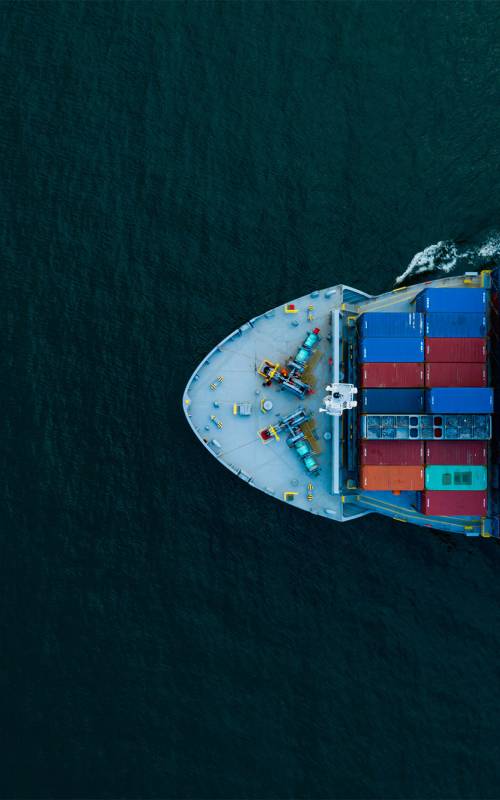Ship full container loads with Transway – worldwide and safely
Do you want to ship all kinds of goods safely, quickly and efficiently by ship?
Then full container loads are your method of choice. A number of complex tasks await you with Full Container Load (FCL). What documents are required? How is the customs process handled for FCL shipments? How is it ensured that my goods survive the transport unscathed? As a freight forwarder with over 40 years of experience, we know the industry and know exactly what is important.
With full container loading, not a single centimeter of container space remains unused. Specially designed for large orders, you use the entire capacity of the container and save on shipping costs. That's not all: With full container loading, only your transport goods are in the container. For you, this means: no unnecessary stops, no delays due to third-party freight, no waiting for the consolidation of various loads.
Every shipment of goods is as individual as your business. We analyze your needs and ensure that your FCL container perfectly matches your freight requirements.
The world of logistics – a world that is highly dynamic and in which numerous influencing factors play a role. Uncertainties are not uncommon, as you may know from your own experience. This is all the more reason why you want a partner like us at your side. A partner who is prepared for everything and who will not be thrown off course by unexpected events.
Our team has years of expertise in the field of container transport. We have completed countless FCL shipping projects all over the world - successfully, of course!
With our full-service approach, you can rely on us to be at your side from start (collection) to finish (delivery) and to ensure that your goods arrive safely at their destination.
The world of logistics is becoming more and more sustainable. That is why we are also striving to reduce our carbon footprint. We use sustainable loading techniques wherever possible and rely on environmentally friendly transport solutions. In this way, we reduce CO2 emissions and at the same time help you to operate more greenly – a win-win situation.
Short- and long-term solutions
Short-term solutions for the transport of full container loads
Unforeseeable FCL needs, urgent orders or sudden market changes – thanks to our wealth of experience and high level of flexibility, we are prepared for every eventuality and will bring your goods to their destination. Just as you would expect from a good sea freight forwarder: reliably and safely.

Long-term solutions for the transport of full container loads
Full container load is not a one-off thing for you? We will build a reliable and long-term partnership with you. How do you benefit from this? With greater efficiency in terms of transport and lower costs. Our continuous quality and safety management ensures that your cargo is always optimally looked after and arrives safely at its destination.

What makes us different from other forwarding companies?
Large freight forwarding companies
- Rigid organisational structures - inflexible
- Changing contact persons
- Hotline
- Slow response time
- Lack of transparency

- Wide range of suppliers and transport solutions
- Permanent contact persons along the entire transport chain
- Direct dialling
- Fast response time
- Information on any status, at any time``
over 346 customers have already trusted us
FAQ ship full container loads
Standard container: These containers are not the most used freight containers in the world for nothing. They are suitable for any type of transported goods that are not alive, liquid or temperature-sensitive.
20' DC (20-foot dry container): This container, which is 6.1 meters long and 2.6 meters high, is suitable for a variety of dry goods, such as boxes, cartons, pallets or any other goods that are not temperature-dependent or exceed the standard dimensions.
40' DC/HC (40-foot dry container/high cube): This 12-meter-long and 6.1-meter-wide container is available in the standard or high cube version, which at 12.3 meters is around 30 centimeters higher than the standard. This version is often used for voluminous or bulky goods that require a lot of vertical space.
45' HC (45-foot High Cube): At 2.9 meters wide and 13.7 meters high, this container is a good deal larger than the 40-foot version. Long pipes, large pieces of furniture or other bulky goods can be transported with it. Special equipment: If the standard dimensions are not sufficient, specialized container types are used that are designed for transport goods with special requirements. Open top container: Large cargo, e.g. parts of construction machinery, do not fit through the door of a standard container and must be loaded from above with a crane. Instead of a fixed roof, the open top container has an open top that is covered with a tarpaulin. This makes it ideal for transporting large volumes of goods. Hard top container: In terms of its structure, the hard top container is similar to the open top model, but has a fixed roof that can be sealed. This provides additional protection for your goods. Flat rack container: Vehicles, boats, large machines or steel beams often have to be loaded from the side. The solution in this case: flat rack containers without side walls.
Platform container: These containers consist only of a base plate without side or end walls. Often used for very heavy or large loads such as machine or vehicle parts.
Flexitank: A liquid-tight tank container made of rubber that is used for the transport of non-hazardous liquids within an ISO standard container.
Refrigerated container: Refrigerated containers do what their name promises: their integrated cooling units regulate the temperature required for the container contents. This makes refrigerated containers indispensable for products that must be transported at a controlled temperature. In addition to food, this also includes pharmaceuticals and chemicals.
20' Reefer: The 6 meter long and 2.6 meter high container is the solution when small quantities of goods or temperature-sensitive goods are to be transported over short distances.
40' Reefer: 12 meters long, 2.6 meters high - plenty of space for large quantities of temperature-controlled goods or long-distance transport.
Transport of dangerous goods: Anyone who deals with dangerous goods has to work as precisely as a Swiss watch: correct classification, correct labeling, special containers, a mountain of paperwork, trained staff, emergency plans and careful route planning. This is just a small selection of the tasks involved in transporting dangerous goods, which shows how complex this topic is.
To protect your valuable goods, we leave nothing to chance and are prepared for every scenario. While our highly trained employees seal standard containers to protect them from external influences, special fastening systems such as chains or tensioning belts are used for open containers - for example flat rack or platform containers.
To decide whether shipping by full container load (FCL) is cheaper
than less than less than bulk (LCL), you should consider the following:
Compare costs: Determine the cost per cubic meter or per kilogram for LCL and put this in relation to the total cost of an FCL shipment.
Consider additional fees: Consider fees such as port levy, storage costs and customs duties that can apply to both LCL and FCL.
Speed: FCL is often faster, here your cargo does not have to be consolidated with other shipments, as is the case with LCL. For a detailed quote including a breakdown of all costs, please
contact us.
First the good news: In principle, you can also use FCL if your goods do not fully utilize the container.
The following questions should be considered here:
-
Is the price for an LCL transport possibly lower?
-
Are there additional charges if I do not fully utilize the space?
-
Is my goods sensitive and should they be transported in their own container?
-
Am I under time pressure and cannot wait for consolidation with other goods?
The transport of full container loads is associated with a whole range of formalities. Many formalities in turn are accompanied by a large number of documents. The documents required vary depending on the goods, country of origin or destination, customs requirements and many other factors.
We have listed the most important ones below:
Bill of Lading: Issued by the freight forwarder or shipping company to the shipper, the bill of lading confirms ownership of the goods. The bill of lading is one of the most important documents in sea freight logistics and also confirms that the goods have been received undamaged and can be shipped. The bill of lading contains information about the recipient and sender, the terms of delivery (Incoterms), the loading location and the type of transport. Commercial invoice: The commercial invoice provides detailed information about the commercial transaction between buyer and seller - description of the goods, the total value, the terms of trade (Incoterms), the name and address of the seller and the buyer and possibly information about the packaging used. The commercial invoice is issued by the exporter and is essential for customs clearance and as proof of the value of the goods.
Packing list: The packing list provides information about the interior of a
container, the number of packages, their contents, markings, numbers,
weight and dimensions. It is of crucial importance for
customs authorities and recipients alike. A look at the packing list reveals whether
the delivery is complete and undamaged.
Certificate of origin: The name says it all. This document certifies the country of origin of the goods being transported. It is crucial for customs clearance as it enables the use of customs preferences or exemptions based on international trade agreements. The document also helps prevent counterfeiting and confirms the authenticity of the goods, which is especially important for buyers.
Commercial Invoice: This document, issued by the
exporter, lists details of the goods to be transported, including description, quantity, price and currency, and other
relevant information. It plays an essential role in customs clearance
and determining import fees.
Ask for the freight costs here without obligation!
Our young and highly motivated team is there to help you!
- Free of charge & without obligation
- quick & easy













